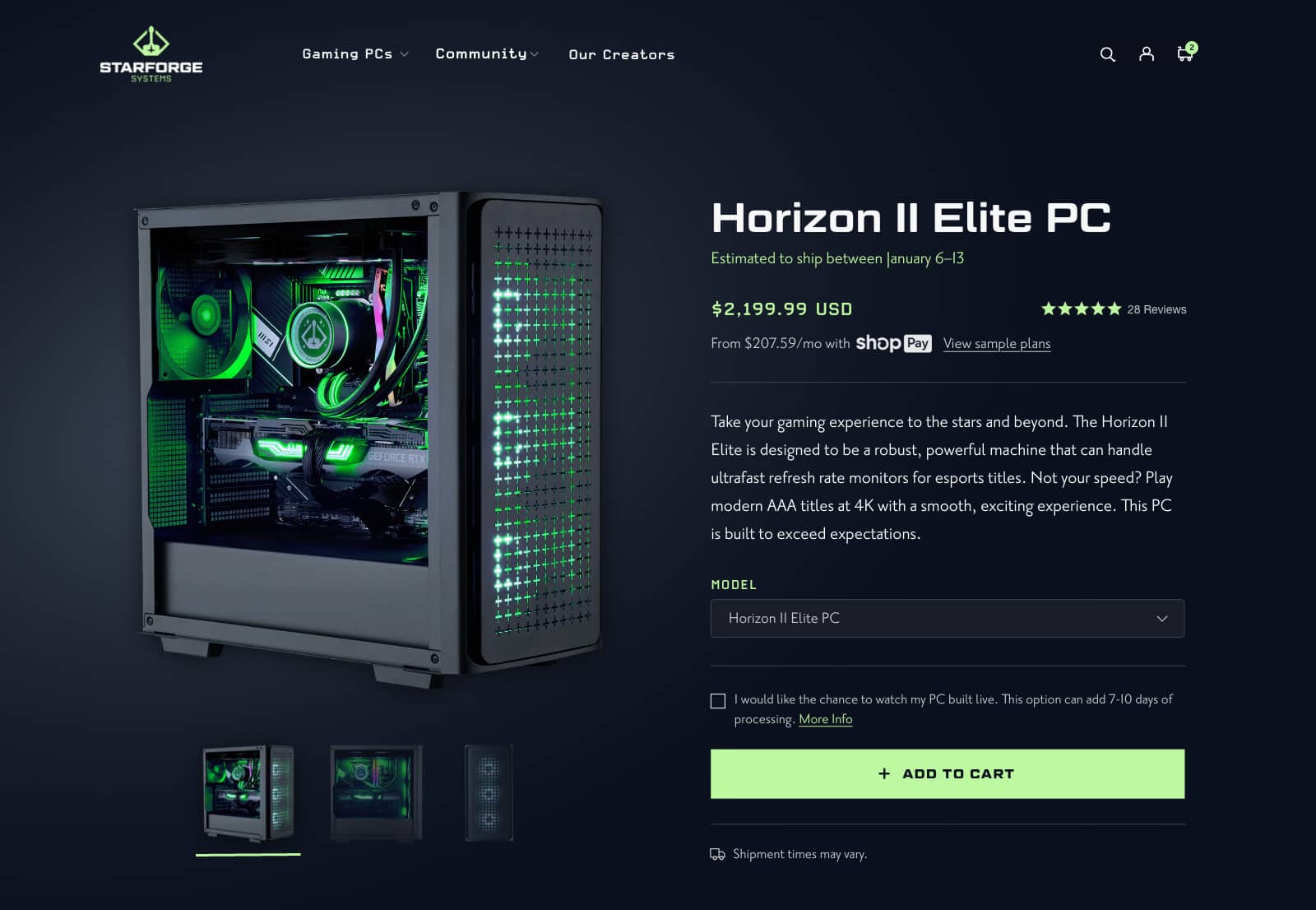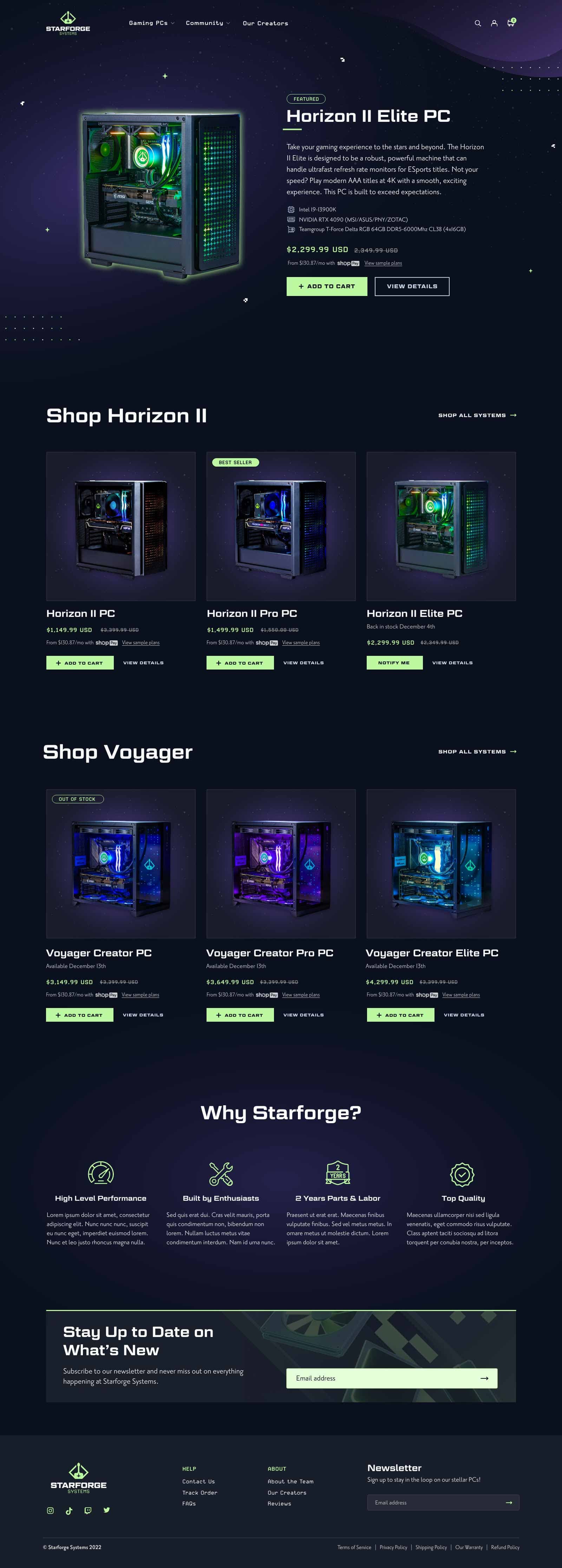Starforge Systems – Ecommerce website
An overhauled e-commerce experience for a PC gaming company, while staying true to the brand of the best PCs in the Universe.

Designing for scale
As the sole designer collaborating closely with a developer, I led the redesign of Starforge Systems’ website, transforming an early startup build into a scalable experience.
Despite a quick turnaround, I focused on establishing visual consistency and reusable layout patterns that could expand as the company grew—from a few PC models to future collaborations with content creators and partners.
Even after my time with the company, the framework created has continued to scale and evolve with their needs, showing the adaptability of the foundation that was created.
Navigation optimization
Redesigned the navigation bar for better placement, balance, and usability while improving both the overall structure and flow.
Minimize cognitive load
Reorganized content to simplify decision-making and reduce cognitive load, maintaining a clear visual hierarchy and intuitive browsing experience.
Improving sitewide usability
Refined usability by improving the site speed and laying the groundwork for usability testing.
CMS-driven modular design system
Built a modular library of reusable CMS content blocks, streamlining page creation and ensuring design consistency across the site.
Aligning design with business needs
Created a smoother, more intuitive user journey that connected better with business goals and made updates easier for internal teams to manage.


Thoughts & Key Takeaways
Designing with empathy for developers
Working alongside a single developer taught me the importance of designing with implementation in mind. By explaining rationale and understanding constraints, I built trust and sped up handoffs. That collaboration helped the final product stay true to the design while being efficient.
Flexibility over formality
As the only designer on a fast-paced startup team, I couldn’t rely on a full design-thinking process. Instead, I learned to prioritize what mattered most: clarity, consistency, and momentum. Sometimes moving fast meant trusting instincts and focusing on what provided the most value for the user and the team in the moment.
Building for what’s next
Even without a formal design system, I approached every component with scalability in mind. The modular CMS structure allowed future designers and developers to expand easily which is something I’m proud to see has continued to evolve after my time there.